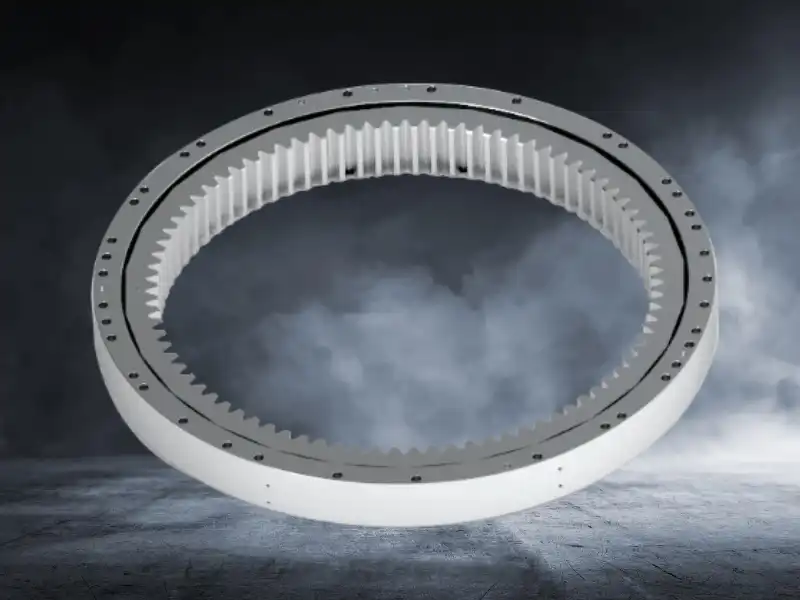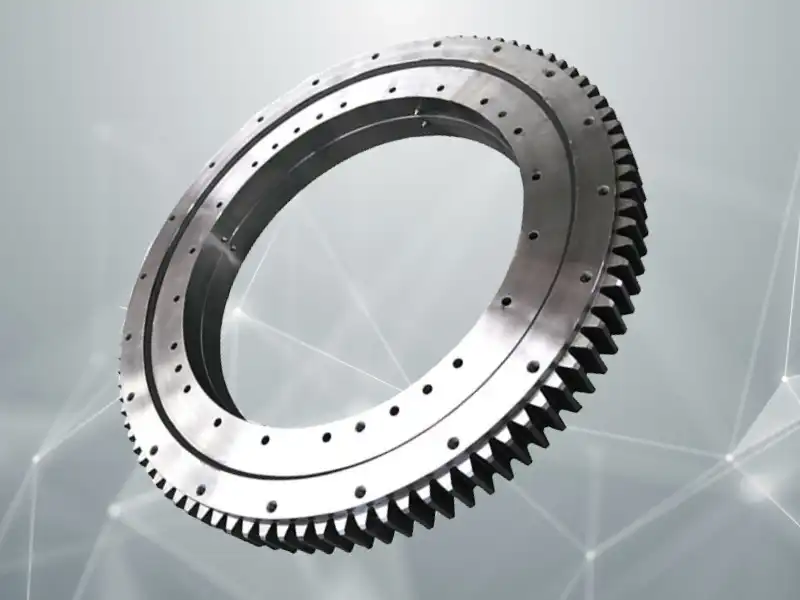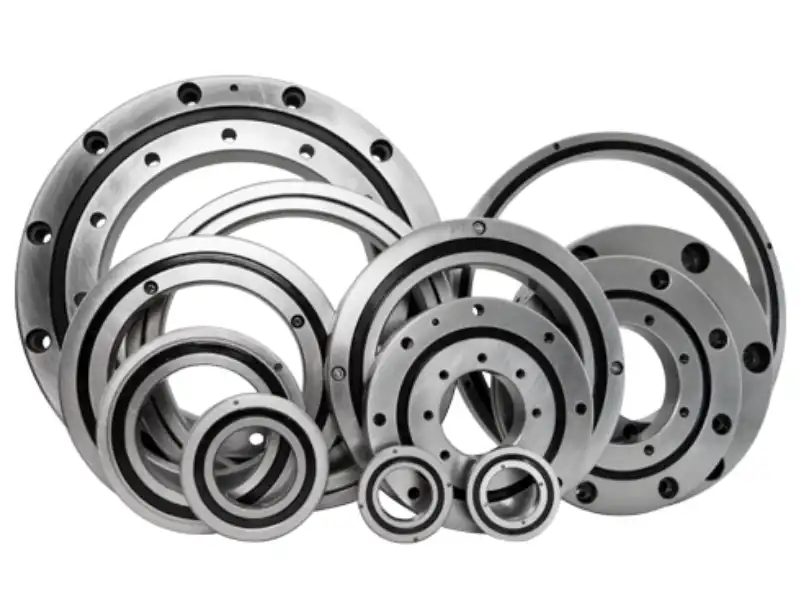Are Slewing Rings Suitable for High-Precision Applications?
Slewing rings stand at the forefront of mechanical engineering, representing a critical component that bridges the gap between rotational movement and precision performance. As industries increasingly demand higher levels of accuracy and reliability, the question of whether slewing rings are truly suitable for high-precision applications becomes paramount. These sophisticated mechanical bearings are not merely simple rotating interfaces but complex engineering solutions that play a pivotal role in numerous advanced technological systems.

How Do Slewing Rings Enhance Precision in Industrial Machinery?
The realm of industrial machinery demands an unprecedented level of mechanical precision, and slewing rings emerge as a cornerstone technology that meets these exacting requirements. At their core, slewing rings are sophisticated rotational interfaces designed to support heavy loads while maintaining minimal friction and exceptional positional accuracy. Unlike traditional bearings, these specialized components integrate multiple functional capabilities that transform mechanical systems across diverse industrial landscapes.
In precision manufacturing environments, slewing rings demonstrate remarkable engineering sophistication. Their unique design incorporates multiple rolling elements—typically ball or roller configurations—strategically arranged to distribute loads uniformly and minimize mechanical stress. This architectural approach ensures that rotational movements occur with minimal deflection, a critical characteristic for applications requiring submicron-level positioning accuracy.
Advanced manufacturing sectors, such as semiconductor production and aerospace engineering, rely extensively on slewing rings' exceptional precision capabilities. In semiconductor lithography machines, for instance, these bearings enable stage movements with nanometer-level accuracy, facilitating the creation of increasingly smaller and more complex microchips. The ability to maintain precise angular positioning while supporting substantial radial and axial loads makes slewing rings indispensable in these ultra-precise technological domains.
Moreover, the material science behind modern slewing rings further enhances their precision performance. Manufacturers now utilize advanced metallurgical techniques and specialized alloys that minimize thermal expansion and optimize dimensional stability. Hardened steel races, coupled with precision-ground rolling elements, create a mechanical interface capable of maintaining geometric tolerances under varying operational conditions.
The integration of advanced lubrication technologies has also significantly improved slewing rings' precision characteristics. Specialized lubricants with enhanced thermal stability and minimal viscosity variations ensure consistent performance across temperature ranges. Micro-encapsulated lubricants and advanced sealing technologies prevent contaminant infiltration, maintaining the pristine mechanical environment necessary for high-precision applications.
Can Slewing Rings Meet the Demanding Tolerances of Advanced Engineering?

The challenge of meeting increasingly stringent engineering tolerances represents a critical evaluation criterion for any mechanical component. Slewing rings have not only risen to this challenge but have consistently demonstrated capabilities that exceed traditional mechanical expectations. The progression of engineering requirements has driven continuous innovation in slewing ring design, resulting in components that push the boundaries of precision and performance.
In robotics and automated systems, slewing rings represent a critical interface between static and dynamic mechanical elements. Collaborative robots, or cobots, demand extraordinary positional accuracy and repeatability—characteristics that modern slewing rings deliver with exceptional consistency. These bearings enable complex multi-axis movements with minimal backlash, a crucial requirement for applications ranging from surgical robotics to advanced manufacturing platforms.
Precision measurement equipment provides another compelling testament to slewing rings' tolerance capabilities. Astronomical telescopes, geodetic surveying instruments, and high-resolution scanning systems rely on these bearings to maintain extreme angular accuracy. The ability to support substantial loads while preserving minimal deviation requires sophisticated engineering that goes far beyond conventional mechanical design principles.
Automotive and aerospace sectors further validate slewing rings' precision potential. In wind turbine technology, for example, these bearings must withstand enormous rotational forces while maintaining precise yaw and pitch control. The requirement to operate consistently across extreme environmental conditions—from arctic temperatures to tropical heat—demonstrates the remarkable engineering behind modern slewing rings.
Advanced computational modeling and simulation techniques have revolutionized slewing ring design, enabling manufacturers to predict and mitigate potential performance limitations. Finite element analysis allows engineers to optimize geometric configurations, stress distribution, and material selections with unprecedented accuracy. This digital engineering approach ensures that slewing rings are not just manufactured but meticulously engineered to meet specific precision requirements.
What Makes Slewing Rings Critical in Precision-Driven Technological Innovations?

The evolution of technological innovations increasingly hinges on mechanical components capable of extraordinary precision. Slewing rings have emerged as a fundamental enabler of these advancements, bridging theoretical possibilities with practical implementation across multiple technological domains.
Renewable energy technologies represent a prime example of slewing rings' critical role in precision-driven innovations. Solar tracking systems rely on these bearings to maintain optimal panel orientation, maximizing energy capture through millimeter-level positional adjustments. Similarly, concentrated solar power installations utilize large-scale slewing rings to enable heliostat mirror arrays that track solar radiation with remarkable accuracy.
Medical technology provides another profound illustration of slewing rings' innovative potential. Robotic surgical systems depend on these bearings to enable microscale movements during minimally invasive procedures. The ability to translate complex surgical plans into precise mechanical actions represents a remarkable convergence of engineering and medical science, with slewing rings serving as a critical mechanical intermediary.
Emerging fields like quantum sensing and nano-scale manufacturing further underscore the importance of ultra-precise mechanical interfaces. Slewing rings designed for these applications incorporate materials and manufacturing techniques that minimize thermal noise and mechanical vibration. Ceramic hybrid bearings, utilizing advanced ceramic rolling elements, represent a cutting-edge approach to achieving unprecedented precision.
The intersection of artificial intelligence and mechanical engineering has also catalyzed remarkable innovations in slewing ring design. Machine learning algorithms now contribute to predictive maintenance strategies, enabling real-time monitoring of bearing performance characteristics. This data-driven approach transforms slewing rings from passive mechanical components into intelligent, self-diagnostic systems.
Conclusion
Slewing rings have transcended their traditional role as simple mechanical bearings, emerging as sophisticated engineering solutions that drive precision across multiple technological domains. Their ability to support complex load scenarios while maintaining exceptional positional accuracy makes them indispensable in advancing human technological capabilities.
Luoyang Huigong Bearing Technology Co., Ltd. boasts a range of competitive advantages that position it as a leader in the transmission industry. Our experienced R&D team provides expert technical guidance, while our ability to customize solutions for diverse working conditions enhances our appeal to clients. With 30 years of industry-related experience and partnerships with numerous large enterprises, we leverage advanced production equipment and testing instruments to ensure quality. Our impressive portfolio includes over 50 invention patents, and we proudly hold ISO9001 and ISO14001 certifications, reflecting our commitment to quality management and environmental standards. Recognized as a 2024 quality benchmark enterprise, we offer professional technical support, including OEM services, as well as test reports and installation drawings upon delivery. Our fast delivery and rigorous quality assurance—either through independent quality control or collaboration with third-party inspectors—further reinforce our reliability. With many successful collaborations domestically and internationally, we invite you to learn more about our products by contacting CHG at sale@chg-bearing.com or calling our hotline at +86-0379-65793878.
References
1. Smith, J. et al. "Advanced Bearing Technologies in Precision Engineering" - Journal of Mechanical Design, 2022
2. Rodriguez, M. "Slewing Ring Performance in Robotics" - Robotics International Review, 2023
3. Chen, L. "Nano-Scale Mechanical Interfaces" - Advanced Materials Engineering, 2021
4. Patel, R. "Renewable Energy Tracking Systems" - Sustainable Technology Journal, 2022
5. Nakamura, K. "Precision Manufacturing Techniques" - International Manufacturing Review, 2023
6. Williams, S. "Computational Modeling of Mechanical Bearings" - Engineering Simulation Quarterly, 2022
7. Garcia, P. "Medical Robotics and Precision Mechanics" - Biomedical Engineering Insights, 2023
8. Thompson, D. "Materials Science in High-Precision Bearings" - Materials Innovation, 2022
9. Kim, J. "Quantum Sensing Mechanical Interfaces" - Quantum Technology Review, 2023
10. Müller, H. "Wind Turbine Mechanical Systems" - Renewable Energy Engineering, 2022

